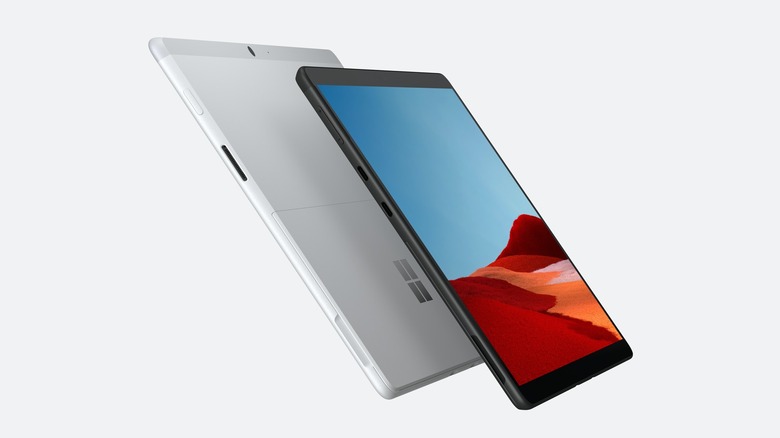Microsoft Surface And Servers May Be Next To Dump Intel For In-House ARM Chips
Intel's breakup with Apple may only be the start of the chip-maker's problems, with Microsoft rumored to be planning a similar strike out for independence with its own processor designs. While Intel's long-standing rivalry with AMD has given the computing world two main choices for the past decades, industry heavyweights are increasingly looking to Arm-based chips as an alternative.
Most high-profile has been Apple's decision to shift its Mac line away from Intel's processors, and over to chipsets of its own design. Much as the Cupertino firm cooks up its own, in-house designs for iPhone and iPad processors, so recent Mac models – such as the MacBook Air – have moved to using Arm-based alternatives to Intel's x86 Core series. Apple expects the transition to take roughly two years.
Now, Microsoft is said to be working on the same sort of thing. The company currently relies on Intel processors for its servers, with which it offers services like Azure cloud. It also uses Intel chips for most – though not all – of its Surface computing range.
In the works, though, are Microsoft in-house chipset designs, Bloomberg says. Citing insiders familiar with Microsoft's plans, the report says that the new chips would use Arm's architecture, both for data centers and for at least some of the Surface range.

Though the Surface lineup – which currently consists of laptops, tablets, and desktop all-in-one computers, all running Windows, and the Surface Duo clamshell which runs Android – is high profile in the PC space, Intel losing part of its business there might not represent too great a hit on the chip-maker's bottom line. Being squeezed out of the Microsoft data center, however, could represent a much more dangerous shift. Microsoft's cloud services have become the centerpiece of its business, offering both enterprise and consumer customers everything from Office apps through to AI processing.
Efforts to shift data center servers from x86 to Arm aren't new, though such hardware is still in the minority. Part of the challenge there has been ensuring software typically designed for the processors from Intel and AMD runs as effectively on Arm-based chips. While the latter can be more frugal, and in some cases more powerful, that's reliant in no small part on the efficiency of the software load they're faced with.
Microsoft, however, could be in a privileged position on that front. Much as Apple has the capacity to tailor macOS to run on Apple Silicon chips like the M1 in its newest Macs, so too could Microsoft fettle its server software to take full advantage of its in-house chip designs.
On the Surface side, meanwhile, currently Microsoft offers the Surface Pro X, a 2-in-1 tablet that runs its own SQ 2 chip built by Qualcomm. While powerful, one of the challenges the company has faced is getting app support. Windows on ARM has made advances on that front, but still lacks the breadth of software options that traditional Intel and AMD-powered PCs enjoy.
If Microsoft is serious about embracing Arm-based chipsets, however, that process could be accelerated. Exactly what sort of timelines Microsoft might have in mind – or if the in-house designs actually come to fruition at all – remains to be seen.
